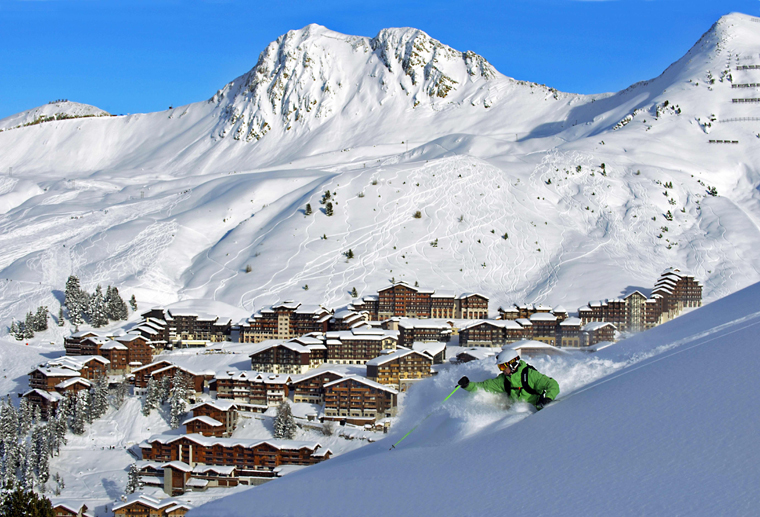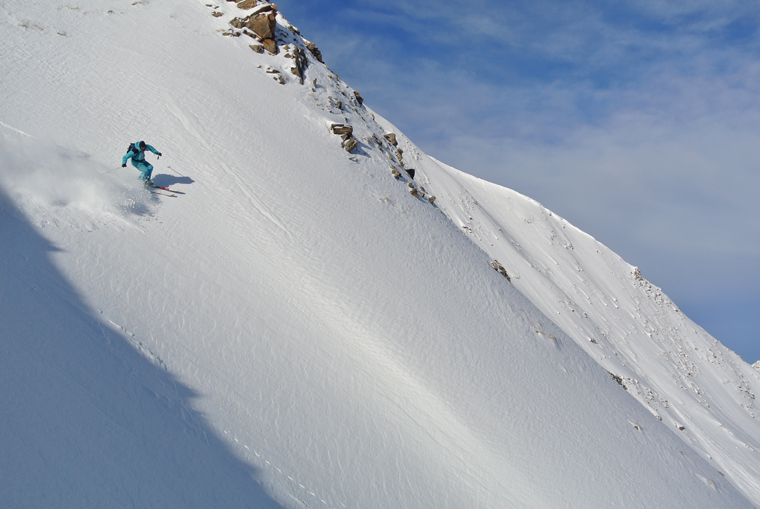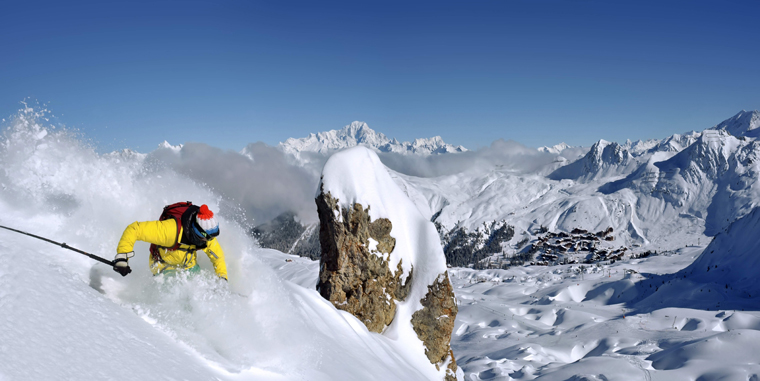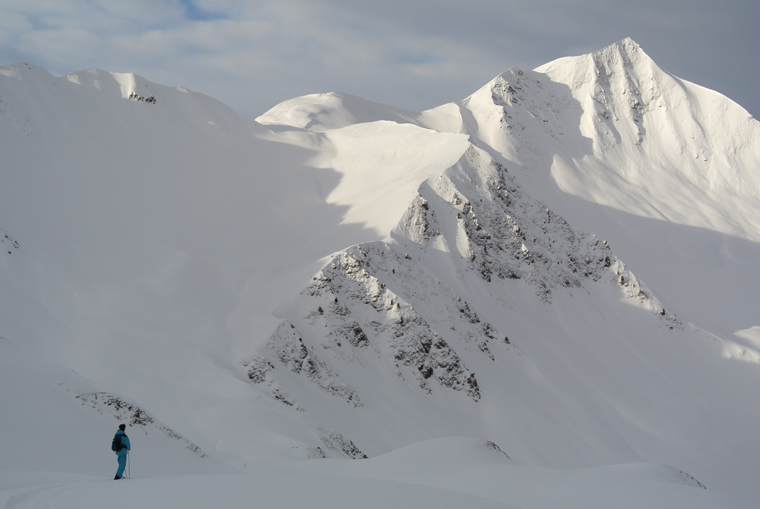The secret (powdery) side to La Plagne


I’m standing just below the summit of 2558m Mont Jovet in the French Alps. The views are sensational, with the Mont Blanc massif to the north and the slopes of Courchevel and La Tania to the south, while immediately to my right is La Plagne and the enormous network of lifts that makes up the giant Paradiski area.
So, considering the sun is shining and we’ve just had 25cm of fresh powder after one of the worst starts to the season in decades you might expect the slopes beneath Mont Jovet to feature a regular rash of skiers feasting after the famine.

But there’s not a soul in sight. Sure, you have to skin up to get here, but it’s an easy 90-minute ascent. And despite the fact it’s 11am in the morning the 500m-plus of descent that awaits below is an untracked, open powder field just crying out for a signature or two.
Matteo de Marchi, an Oxygene ski instructor, and I are happy to oblige. We set off either side of a small, steep couloir, getting in three or four hard, sharp turns before the whole thing opens out into a gloriously wide playground of shin-deep fluff.
We can pretty much take any line we like, getting in dozens of wide, sweeping turns accompanied by whoops and hollers (show me a man who can keep his gob shut on a run like this) until eventually we glide to a halt to give our quads a rest and admire our handiwork.
Above us lie two lines that in Matteo’s case at least would make a master-calligrapher proud. We feel pretty pleased. There’s still a couple of hundred metres of descent through low shrubs and trees before we hit the right bank of the Ruisseau de Frasse for an easy ski out to the slopes of La Plagne and the Chalet de la Rosse where we’ll find, according to Matteo, the best pizza in La Plagne.
It’s still only 11.30am but I feel Matteo’s recommendation of an early lunch featuring his national dish (and a cold beer) is advice worth taking. As we wait in the January sunshine for our food to arrive I reflect on the fact that I’ve just done my best off-piste run of the season in a resort that is generally regarded as a family and intermediate paradise.

OK, we actually skied outside the resort but we accessed Mont Jovet via the Becoin chairlift and when I ride up it again an hour later the sidecountry off the top is still only lightly tracked; and I can see across to Mont Jovet where the tracks Matteo and I laid down are still the only ones on the mountain.
This wasn’t any fluke. Over the previous two days I’d skied entirely within the resort with another instructor from Oxygene, Laurent Gras, when the only time we hit the pistes was to get from one freeride area to another.
So what’s going on here? Why is La Plagne hiding its magnificent freeride terrain from the world? Why don’t we hear more about epic runs like the North Face of the Bellecôte, with its challenging mix of steep chutes, big powder fields and playful glades on the lower slopes, and the sunny, wide open descent to the hidden alpine valley of Champagny le Haut?
I think what’s happened is that the resort has so successfully marketed itself as an intermediate and family destination that the array of off-piste options has been forgotten about. Check out most of the promotional material on La Plagne and if your idea of a good time is blasting down red and blue motorways and covering the miles it’ll appeal; but if you’d prefer to seek out powder fields and steeps, it’ll probably have slipped beneath your radar.

Even in sketchy conditions La Plagne can come up with the goods. I’d come over from my home in Les Arcs, where the conditions were dire (unless ice, rocks and grass are your thing), yet just a couple of kilometres away in La Plagne Laurent was able to take us to virtually deserted powder runs on the couloirs of Les Rossets below Roche de Mio, beneath Le Tougne (accessed via ‘Brown Trouser Ridge’) and on the north face of Les Verdon, right above Plagne Centre.
The next day it was snowing heavily and visibility was poor so Laurent led us through trees above Montchavin where we encountered 20cm of powder (albeit on a scratchy base) before heading back up to the top of 2385m L’Arpette for a 700-metre descent down rolling, mellow slopes of boot-deep pow, fresh tracks all the way, to hot chocolate at the Chalet du Fríolín beneath the massive Sommet de Bellecôte.
“The trick,” said Laurent, “is to ski on terrain facing north, north-north-east or north-north-west, and here in La Plagne we have many such slopes”.
The resort tops out at 3250m so it’s pretty snow sure and even in a bad season there’s off-piste action to be had. I spent the winter of 2010/11 in the pretty village of Champagny-en-Vanoise on the southern tip of La Plagne’s ski area. Despite it being a dud season it was well into spring before I struggled to find decent off-piste (don’t miss the array of easily-accessed sidecountry off the top of the rickety old Bellecôte).

Which all goes to show that when you’re looking for quality backcountry mileage sometimes you’re better off at a family resort where pistes might be busy but off-piste will be quiet and plentiful, rather than making a beeline for the usual suspects that get tracked out by 11. Who knows, you might even take the family along, too.
The nearest airports are Chambery (1.5 hours); Lyon and Geneva (2.5 hours). Or you can take the train from London to Bourg St. Maurice (just over 30 mins by car from La Plagne).
VIP Ski’s Summit View chalets in Plagne Central offer ski in/ski out accommodation and easy access to off-piste areas such as Verdon Nord and the backcountry terrain of Mont Jovet.
Oxygene Ski from €185 for three hours. Six-day Paradiski lift pass (La Plagne and Les Arcs) costs £236.